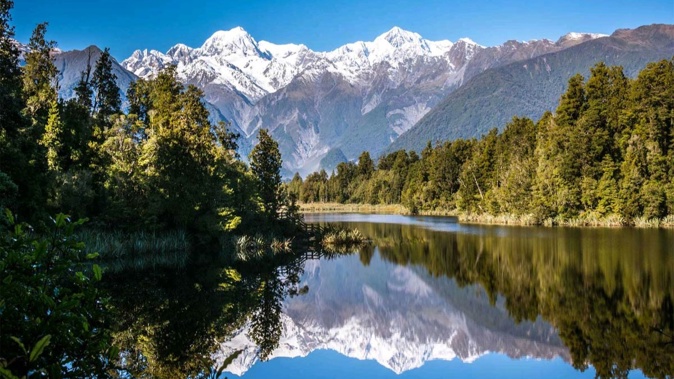
South Westland’s natural splendour seems to grow in awe-inspiring intensity the further south you go. There’s a fairytale quality to the sense of escapism, as you drive through those long and leafy highway glades, where the forest canopy drapes across the road. I wended my way to Whataroa, where nesting is the star attraction. Just out of Whataroa, the rare white heron/kōtuku nest at the Waitangiroto Nature Reserve from September to March. You can only access the reserve on a guided tour with White Heron Sanctuary Tours. For 36 years the Arnold family have been enthralling visitors, after having the vision to care for and share this world class attraction, with the exclusive DOC concession to the site.
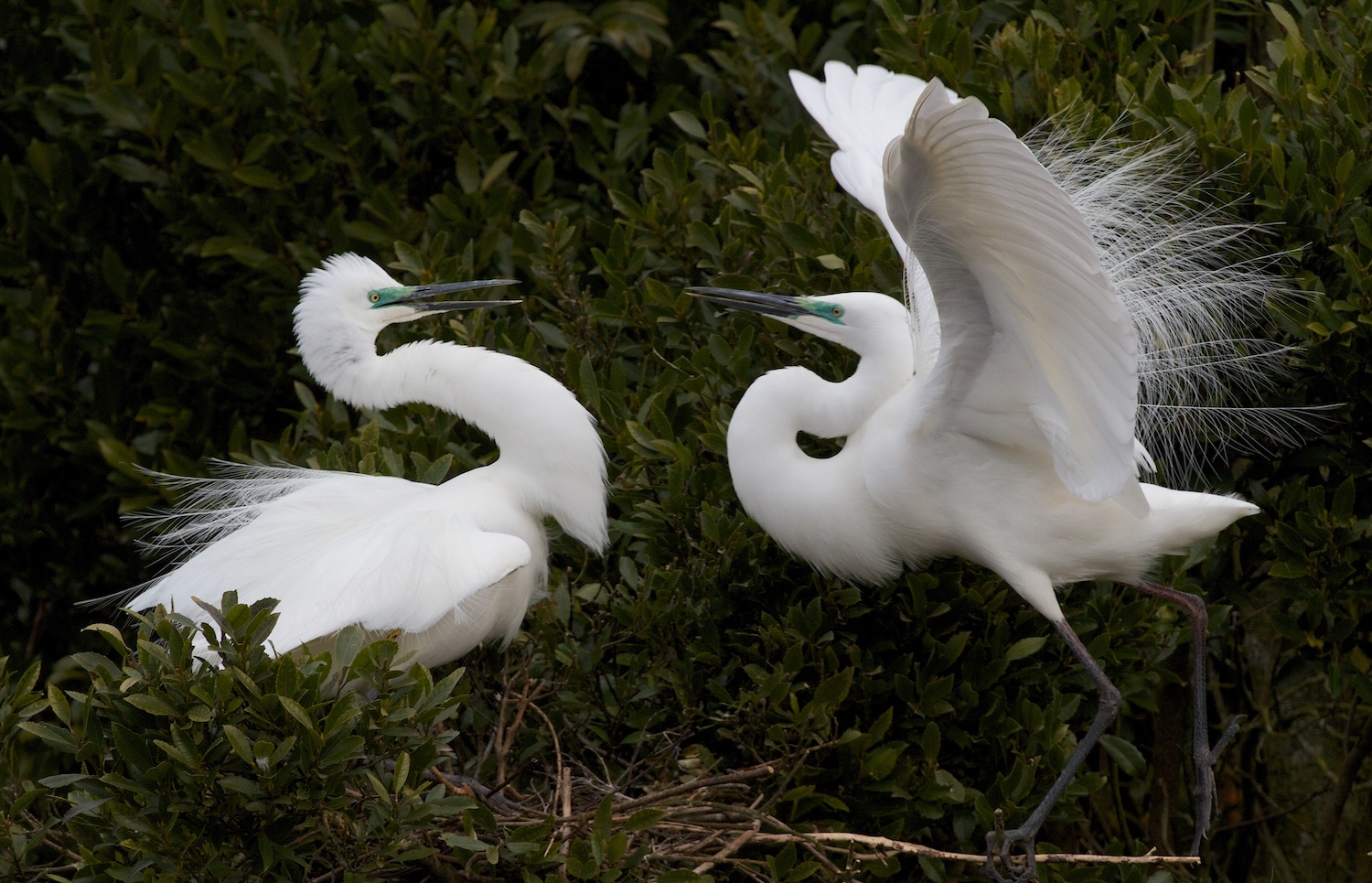 White Heron nesting colony at Whataroa. Photo / Supplied
White Heron nesting colony at Whataroa. Photo / Supplied
Dion Arnold led our tour group, a naturally charming host with a typical jocular and self-effacing West Coast demeanour, keeping us engrossed with a stream of anecdotes and insights, underscoring his abiding passion for accessible conservation. It's presumed the first White Herons were windblown across the Tasman Sea from Australia, several hundred years ago. But just why the White Herons have only one nesting site in New Zealand and why it’s in this far-flung pocket of South Westland, remains one of nature’s great secrets. Over summer, the sanctuary has already played host to a rare Australian visitor – a Pacific Heron.
After admiring the forest finery, the first viewing point enchanted us with the spectacle with some of the other sanctuary residents – the Royal Spoonbill and the Little Shag. It was all aflutter. Five minutes later, we arrived at the double decker viewing hide for the star attraction. Across the water, the verdant rainforest appeared to be laden with big fluffy snow-white balls of candy floss. It was absolutely transfixing to watch from the viewing hide, where you’re about 20 metres away from the birds. Treat yourself to a tour with the Arnolds. www.whiteherontours.co.nz
Just 25 minutes south from Whataroa, Ōkārito is an irresistibly laidback hamlet, like a world unto itself. On arrival, you’re rewarded with stunning panoramic views of the towering jaws of the Southern Alps, the roar of the ocean, the magnificent lagoon, striking sea cliffs and vast, lush forest in this heart-stealing eco-wonderland. Strolling the village and discovering its spoil of historic nuggets is a delight, including the restored wharf, glowing in the golden rays of daybreak. But the piece de resistance is unquestionably Ōkārito Lagoon, New Zealand’s largest unmodified wetland. This sprawling estuarial lagoon teems with birdlife and is best experienced on a kayak tour with Gemma, Baz and the team from Ōkārito Kayaks. This locally-owned business has been renting kayaks and guiding travellers on Ōkārito Lagoon for over thirty years. https://okarito.co.nz
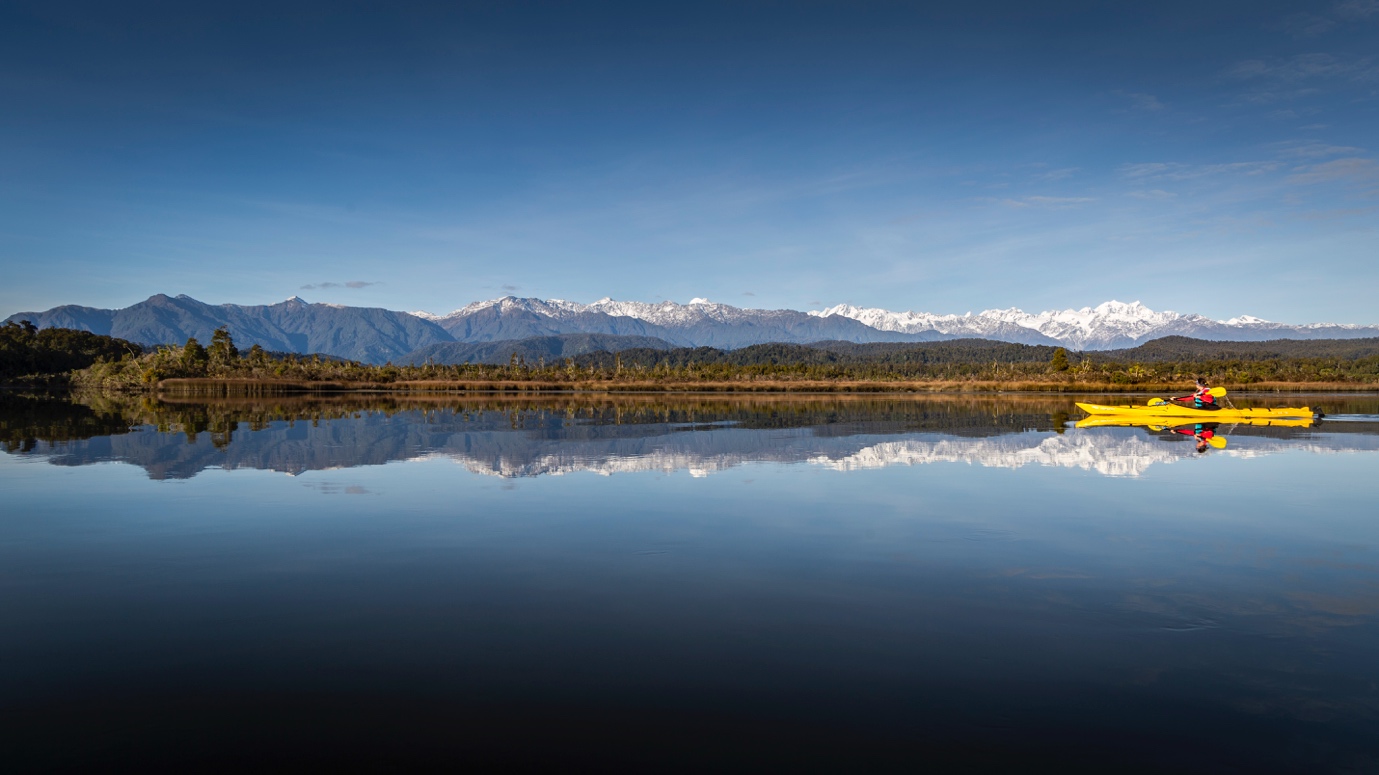 Ōkārito Lagoon. Photo / Supplied
Ōkārito Lagoon. Photo / Supplied
In the morning calm, you’ll see so many of the 70 bird species feeding in the lagoon - from royal spoonbills, godwits, terns and oystercatchers to pied stilts, Caspian terns, paradise ducks…and best of all, the great white heron. The lagoon is their main feeding ground for the kotuku. It's also the permanent home for some of the population, after they’ve left the nest, so you’ll see them year-round on Ōkārito Lagoon.
A great base for all your wild adventures is Franz Josef township, which is also home to the West Coast Wildlife Centre. They operate the official breeding programme for the world's rarest kiwi, the Rowi. It’s well worth a visit to check out their stirring work. Previously considered a variety of Brown Kiwi, the Rowi was recognised as a distinct species 20 years ago. Since first opening in 2010, the West Coast Wildlife Centre has safely hatched hundreds and hundreds of kiwi chicks. Five years ago, several dozen Kiwi were released into a new DOC sanctuary in the Omoeroa ranges near Lake Matheson, just out of Fox Glacier. I adore the magnificent mirror of Matheson, reputed to be New Zealand’s most photographed lake. Get up early for a dawn jaunt or end your day with a lakeside stroll at dusk, and you might even hear the kiwi calls reverberate across its reflective waters.
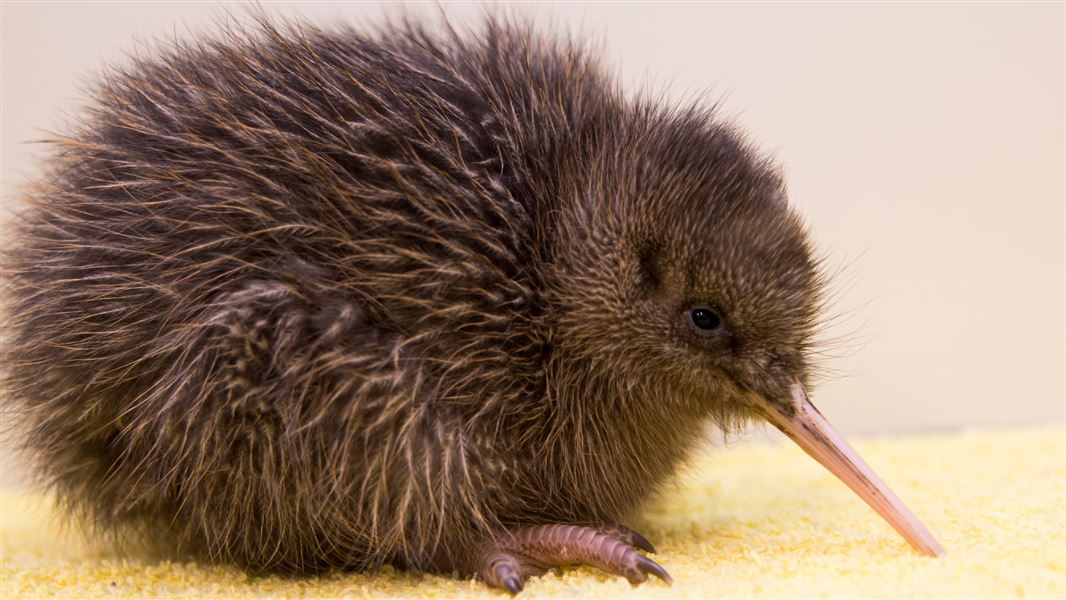 Rowi kiwi chick. Photo / West Coast Wildlife Centre
Rowi kiwi chick. Photo / West Coast Wildlife Centre
Nestled in ancient rimu and kahikatea forest and revered for its mirror views of Aoraki/Mount Cook and Mount Tasman, its exceptional reflecting properties are due to the dark brown tannins leaching into the water leached from the forest floor. Keep your fingers crossed for calm, clear weather that are the essential ingredients for the mirror magic. It’s a 40 minute return walk from the car park to the Jetty Viewpoint. For a longer leg-stretcher, plump for the 90 minute Lake Circuit route which leads you to the View of Views at the top end of the lake, plus Reflection Island. The painterly spectacle of a pristine mountain reflection, shrouded in native foliage, is what mesmerising travel moments are all about.
The twin glaciers, Franz Josef and Fox are revered as being two of the most accessible glaciers in the world, plunging down from the Southern Alps, wrapped in rainforest, almost to sea level. Descending from 3000 metres, Franz Josef Glacier terminates just 240 metres above sea level, and just 19km from the coast. The terminal face of Fox, which is the longest of the West Coast glaciers, is only 12km from the Tasman Sea. It’s what makes Franz Josef and Fox so exceptional – you’d struggle to find many glaciers so close to the ocean. There are a multitude of ways to commune with these wondrous ribbons of ice. From the valley floor, the walking tracks to the terminal face viewpoints will take you about 30 minutes to complete at Franz Josef and 90 minutes at Fox.
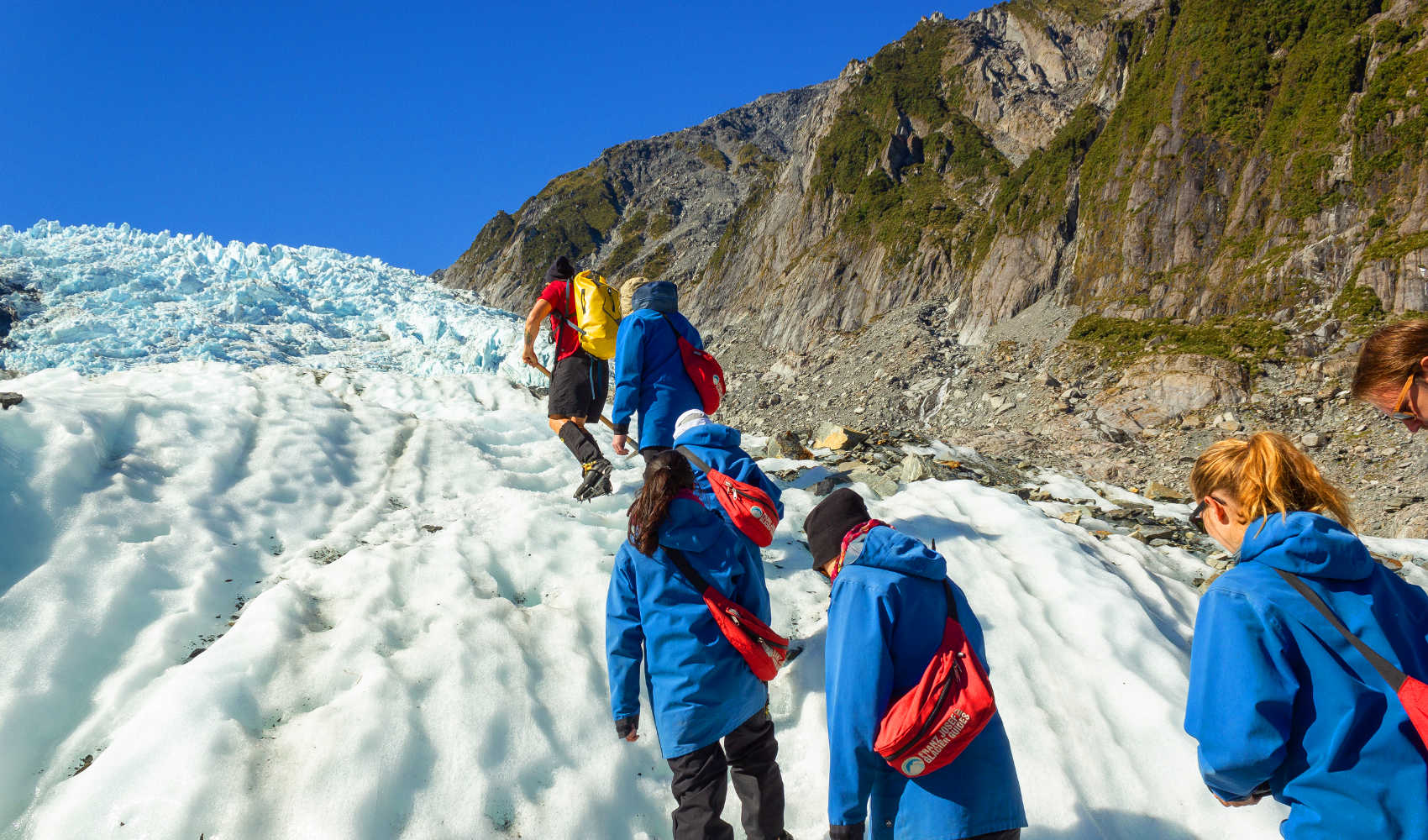 Glacier climbing at Franz Josef. Photo / Tourism New Zealand
Glacier climbing at Franz Josef. Photo / Tourism New Zealand
But to get intimate, up-close or even to set foot on these glaciers, whether you’re heli-hiking, heli-ice climbing, or hankering for a scenic flight, there’s plenty of tour operators touting specials in the main street of both townships. If you’re up for on-the-ground adventure, I’d definitely recommend an ice climb on Franz Josef Glacier. Its steeper gradient gives rise to more crevasses and ice caves and you have a much better chance of seeing the universal allure of blue ice. One of nature’s great illusions, blue ice occurs when snow falls on a glacier, is compressed and enlarges the ice crystals, creating the blue hue. Speaking of walks, another great jaunt in Franz Josef is the 1 hour 20 min return walk to Callery Gorge, where you’ll be following in the footsteps of goldminers on this historic route, which unfurls as a rainforest and electric blue glacial water symphony.
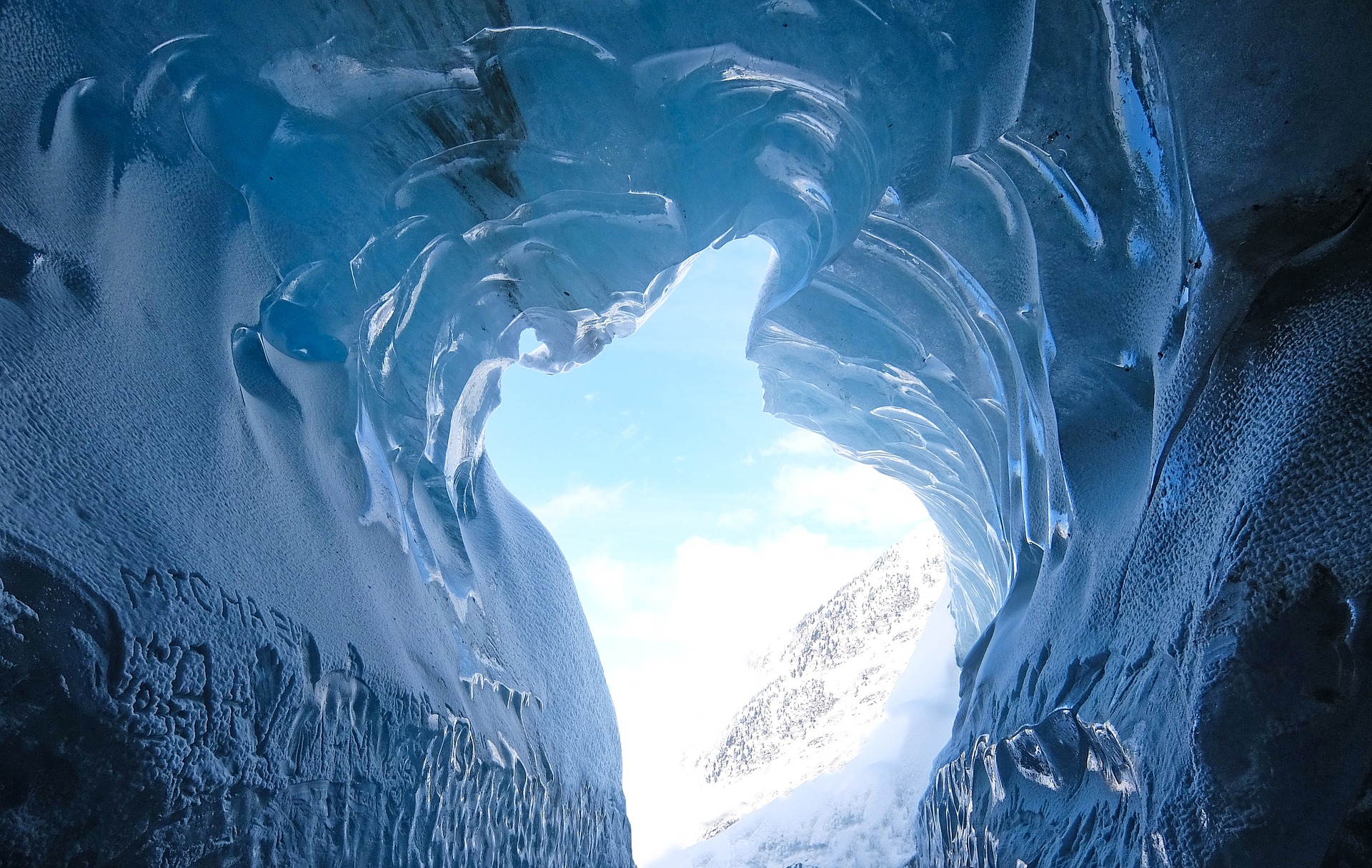 Blue Ice on the Franz Josef Glacier. Photo / Tourism West Coast
Blue Ice on the Franz Josef Glacier. Photo / Tourism West Coast
Where to stay? Blissfully enrobed in West Coast rainforest, Punga Grove Motel & Suites is a stirring oasis in the heart of Franz Josef. Maximising the beauty of the mountain views and the wraparound greenery gracing the decks, I felt like I was bedding down in the forest in my super-spacious accommodation, which was laden with creature comforts, including SKY TV and free WiFi. www.pungagrove.co.nz
Take your Radio, Podcasts and Music with you









